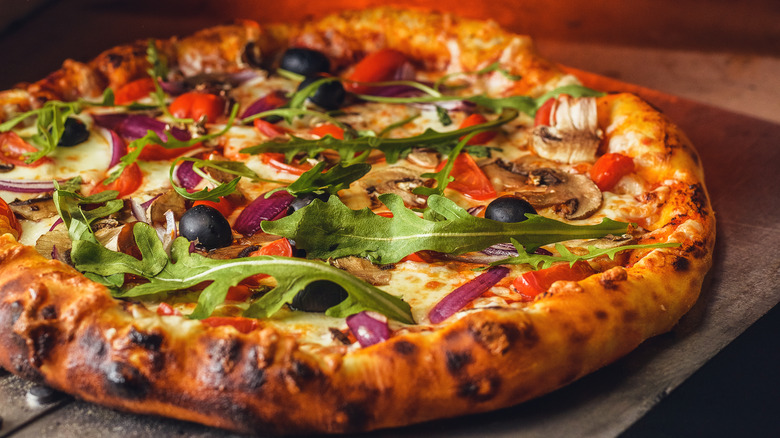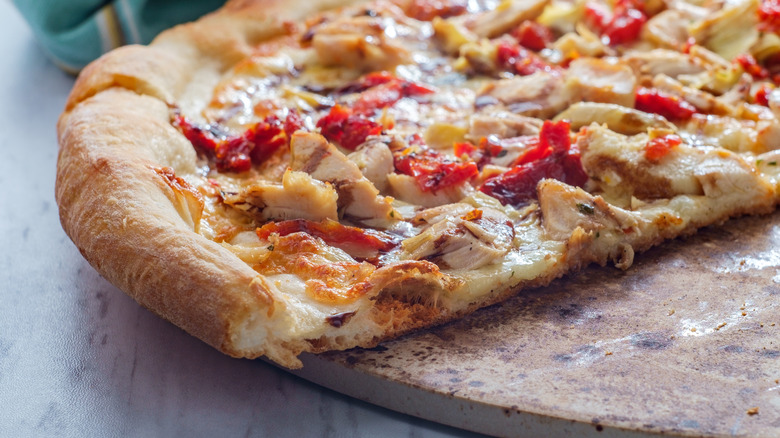The Biggest Mistake You're Making With Your Pizza Stone
The pizza stone is one of those kitchen tools that not everyone has, but everyone needs – well, as long as you're someone who enjoys making homemade pizzas. A pizza stone plays an important role in creating perfectly cooked pizzas in a standard oven. According to David Leite, a James Beard Award-winning food writer, the pizza stone should heat up along with the oven. If you preheat your oven to 500 degrees, then open it to put the pizza in, the oven will lose a tremendous amount of heat (Andrew Zimmern told The Rachael Ray Show that an oven can lose up to 50% of its heat when you open the door). However, the pizza stone, which is a clay stone designed to mimic the interior of a brick oven, will lose virtually none of its heat. As a result, it helps stabilize the temperature at which the pizza cooks, allowing the dough to cook at a more consistent temperature and ultimately producing as close to a brick-oven pizza as is possible with a standard oven.
Pizza stones are useful tools, but if you're going to invest in a pizza stone — or already have one — you should avoid making this one mistake when it comes to how you store it.
Never take your pizza stone out of the oven
Once you put that pizza stone in the oven, it's in your best interest to leave it there permanently. The stone serves a greater purpose than just cooking a pizza. That's why even if you're not a huge fan of homemade pizza, you might still consider investing in one. According to Pequod's Pizza, a pizza stone helps to balance the oven's temperature throughout, making sure that no part of the heating chamber is hotter or colder than another. It results in more even cooking for all kinds of dishes — not just pizzas. Plus, the stone works by maintaining its temperature, which helps the dough cook better, but that temperature maintenance also works for other dishes. The stone prevents the oven from losing so much heat when it's opened.
PureWow says it's important to preheat the pizza stone with the oven; not doing so will defeat the pizza stone's purpose. However, if you store it in the oven all the time, you won't have to worry about remembering to preheat it.
Other mistakes you're making with your pizza stone
Though a pizza stone might seem like nothing more than a smooth disk of clay, there are actually a few mistakes you could be making, causing you to not get the most out of it. With that said, you need to clean it properly — and that doesn't mean scrubbing it with soap and tons of water. Actually, doing so could cause the pizza stone to break. Real Simple says to use as little water as possible to clean the stone and to scrub it with a special pizza stone brush. Using too much water will cause the stone to absorb water, and when you go to heat it, it could break.
PureWow says that other mistakes include cooking a frozen pizza on a stone and baking your pizza at too low of a temperature. When you place a frozen pizza onto a hot stone, you risk giving the ceramic stone thermal shock, which could cause it to crack. And as far as temperature goes, you're trying to mimic cooking pizza in an ultra-hot brick oven, so rather than set the temperature to 350 degrees Fahrenheit, you should set it to as high as it can go (at least 500 degrees Fahrenheit, ideally).


